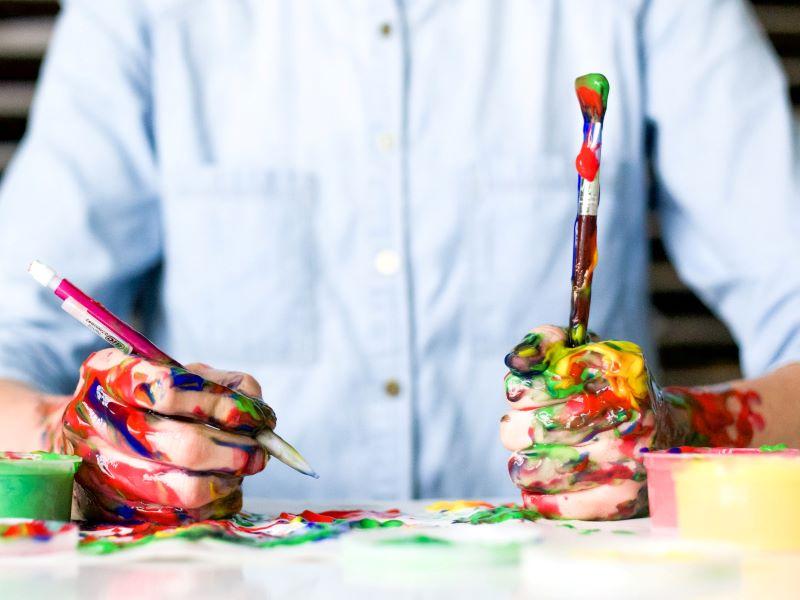“Teachers possess the power to create conditions that can help students learn a great deal − or keep them from learning much at all. Teaching is the intentional act of creating those conditions.” So wrote Parker Palmer in The Courage to Teach, a seminal work for anyone working in and around education.
To say that the past year has been a difficult one for everyone across the globe is an understatement. As a university teacher, I have seen the amount of time and work I dedicate to my students double.
I now find myself glued to the computer, hoping that my continuous presence in the virtual environment will help compensate for the things our online schooling cannot provide. Despite all efforts to make it feel normal, the collective energy we generate when we share a physical space is not something that can be readily recreated online. There is no buzz, no laughter, no fidgeting in seats, not even a yawn.
- Collection: Making online learning fun
- Spotlight: Creativity in higher education
- Seven steps to being a great teacher
Each morning I logged on to greet my class, and at 8am sharp a row of tired faces appeared. Every teacher knows students are always in some state of disarray by the last month of the semester, but this year something else was in their expressions, something heavier than the workload and long nights.
Undoubtedly, we had all struggled with aspects of the pandemic, but I did find cause for optimism. For students who are trained to collaborate closely with peers − which is the case with my students on the bachelor of design course − virtual learning offers windows of opportunity.
This past semester students spent more time than ever examining each others’ work and offering thoughtful feedback and words of encouragement in our new classroom nested in a Slack workspace. As I browsed the hundreds of typed comments, I could almost hear the chatter of the old classroom. Nonetheless, as we neared the end of the semester, my students’ weariness weighed heavily on me.
What could I do to lighten the load? How could we shake things up in the online media that threaten to homogenise even the most disparate teaching styles? These questions prompted a thorough revamping of the final assignment in a second-year design course I teach at Canada’s MacEwan University.
The final project in this course is the design of a poster series in response to the university’s book of the year − a work of contemporary Canadian literature chosen to be taught across faculties. In pre-Covid times, the project culminated in an exhibition of students’ work, proudly held on campus.
Though the project had changed very little over the past seven years, it was a welcome celebration of student achievement enjoyed by both the academic community and the visiting author. The pandemic vetoed this celebration. I could no longer ask my students to design posters that were never going to be hung on walls; the project needed to change.
Taking these restrictions into account and feeling the imperative to inject excitement into the last few weeks of a challenging semester, I rewrote the project into a multifaceted one, with six options to choose from, for all levels of engagement, from high to low.
I borrowed the concept from the popular book series Choose Your Own Adventure and invited my students to decide how they wanted to finish off the semester. They could do something familiar or try something completely new. Whichever “adventure” they chose, they were asked to put into practice what they had learned throughout the semester. I presented this open-ended project as an invitation to invent, discover and learn under individual direction but towards a common goal.
Just when students seemed to be at their wits’ end, I invited Iain Reid, the author of Foe − this year’s chosen book − to visit the class. Students interviewed Mr Reid to gather more insight into his novel, a philosophical suspense story with a science-fiction backdrop. The students’ questions and perspectives on the book surprised and delighted him. “Art inspires art,” he said.
At the end of each interactive session, I could see some light in my students’ eyes again, that surge of endorphins we all needed to get to work on one last project before a well-deserved break. This burst of creative energy helped us forget we were sitting on the same chairs in the same rooms. Even if just for an hour, the outside world entered our homes, swept off our slippers and rescued us from Groundhog Day.
Shaking things up seemed to work. Attendance spiked and student interest and engagement improved. The new project offered plenty of choice, and since one size did not fit all, the only way for students to discover their fit was to sift through and engage with a variety of possibilities.
The result was one the most interesting displays of creativity I have seen in many years of teaching. With a few changes to the design of an assignment, the involvement of a special guest and a lot of trust in my students, I had managed to get my class’ creative juices flowing again.
The great design products that were generated as a result were just the tip of the iceberg. The absolute best outcome of this teaching and learning experiment was seeing my students smiling back at me on my computer screen again.
Constanza Pacher is an associate professor at MacEwan University in Canada.
If you would like advice and insight from academics and university staff delivered direct to your inbox each week, sign up for the Campus newsletter.




comment